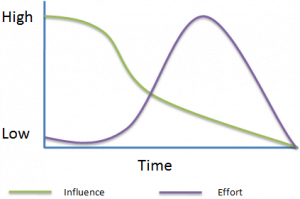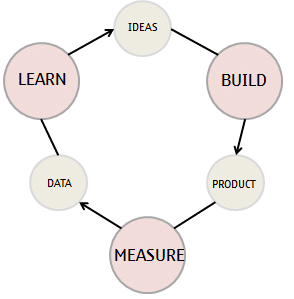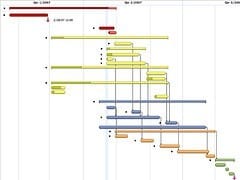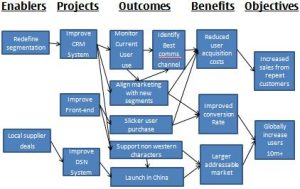In the same way we use project milestones to manage projects, we use program milestones to manage programs. Different organizations will have different program governance in place and therefore use different program milestones for their programs, but the milestones I want to look at today are those defined by the PMI, which map relatively easily to the milestones I’ve seen in use within different organisations. The program lifecycle defined by the PMI is shown below:
From the diagram above we can see that the program lifecycle consists of 5 key milestones (or gates), and thus 5 key phases which happen before each gate:
- Pre-Program Set-up
- Program Set-up
- Establish the Program Management and Technical Infrastructure
- Deliver the Incremental Benefits
- Close the Program
Let’s look at each of these phases in turn, to see at a high-level what they entail.
1. Pre-Program Set-up
The main objective of this phase is to establish a firm foundation of support and approval for the program. This will include the following activities:
- Understanding the strategic value of the proposed change
- Identifying the key stakeholders and their expectations/interest
- Identifying the objectives of the program and aligning them with the organizations strategic objectives
- Developing a high-level business case to justify the program
- Securing approval to start the program
- Appointing a program manager to run the program
- Developing a plan to initiate the program
2. Program Set-up
At this stage the program has received “approval in principle” and we can move to set-up the program. During this stage we should:
- Complete the scope definition and planning
- Define the activities and sequence them
- Obtain duration estimates for all activities
- Create the high-level schedule
- Understand the resources we will use (internal or external, shared etc)
- Have a business case for each project in the program
- Identify risks and instigate the risk management process
- Identified the program team
- Approve the program plan based on the individual project business cases and any supporting evidence.
3. Establish the Program Management and Technical Infrastructure
This phase establishes the infrastructure that will support the program and its constituent projects as they deliver the expected benefits of the program. This will include the following:
- Program specific governance areas such as processes and procedures
- Program specific tools such as reporting, benefit measurement, software development tools etc.
- Program facilities
4. Deliver the Incremental Benefits
This is where most of the work gets done. In this phase we initiate the projects which comprise the program and deliver the incremental benefits. Key activities in this phase include:
- Initiating projects to deliver benefits
- Managing the transition from the current state to the new state
- Ensure projects meeting their business and technical requirements
- Assess progress against plan
- Constantly monitor for factors which may affect the program plan or the planned benefits
- Coordinate the dependencies between projects
- Identify and monitor risks including mitigation actions
- Identify and monitor issues and their corrective action
- Coordinate to ensure efficient use of resource
- Communicate with stakeholders
5. Close the Program
In this phase we shutdown the program in a controlled manner. This includes the following key tasks:
- Review the status of benefits with the stakeholders
- Disband the program organisation
- Document the lessons learned and initiate actions to rectify
Conclusion
We use milestones within the program governance to ensure we are where we need to be as the program is executed. It would be possible to write much more about each specific stage, but I hope this has given you enough of a flavour of each stage to enable you to apply this within your own organization.







